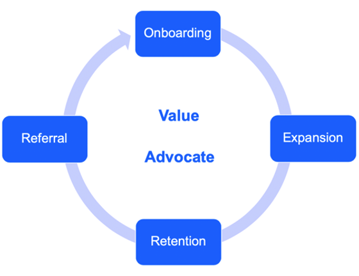
The landscape of Software-as-a-Service ("SaaS") companies has seen a significant evolution in the past decade. There are an enormous number of competitors in the marketplace, each with their own value proposition and each with their own approach towards the customer relationships model.
Given the options, customers have higher expectations than ever before — not just on the quality of the SaaS solution but also on how they will collaborate with their selected vendor. As a result, the way in which these SaaS companies have engaged with their customers has shifted from the traditionally reactive relationship known as Account Management to a more active engagement referred to as Customer Success Management ("CSM").
CSM continues to prove its value within the software vertical and has become increasingly popular, year after year, as it promises to ensure the achievement of each customers’ unique set of objectives. With a more proactive style to the management of the customer relationship, it offers a consistent voice on behalf of each customer inside the walls of the software company. Today one can find multiple LinkedIn groups, Twitter feeds, companies, and conferences contributing to the wealth of information and best practices directed at the management and building of a rewarding and sustainable customer experience.
Though CSM is relevant today, as customers grow and encounter new business challenges, the interaction model between each party must adapt for continued joint success. Wayne Gretzky, former professional hockey player, said it best when replying to a reporter's question as to what made him a great player. “I skate to where the puck is going to be," he answered, "not where it has been.” To continue providing a fruitful relationship for each customer, SaaS companies need to think forward about the various aspects of the customer relationship and look beyond today.
What the next iteration of CSM looks like
Many SaaS companies excel at the management of the day-to-day activities, the enablement of their customers, and doing what's required to obtain the desired results. However, I have found that customers want more from their vendors. Customers want a partner willing to provide feedback and engage in constructive dialogues with provoking new ideas. They also want someone who can contribute to their business, not just manage the standard, day-to-day relationship as the subject matter expert for the solution. The next progression of CSM, and where I have pushed my own teams, is the direction of what I call "Customer Success Leadership".
Stephen Covey best describes the differences between management and leadership as follows:
“Management is efficiency in climbing the ladder of success; leadership determines whether the ladder is leaning against the right wall.” - Stephen Covey
The Customer Success Leadership role has many similarities to the traditional management functions of the past but must evolve to a more value-add approach in today’s ever-changing business world. This means expanding from optimizing the usage of the solution or speaking to relevant industry trends and best practices to raising new ideas or concepts, openly providing feedback, and not simply being satisfied with the status-quo or managing timelines. It involves looking past daily tasks and towards driving business outcomes that can be measured in key metrics. These metrics may be defined differently across organizations — e.g., by dollars, headcount, time-savings — but regardless of the indicator, it is critical for the metric to be defined early in the engagement to align all parties involved on the conditions for success.
The Customer Success Leader (CSL) is the person who drives the relationship forward by adding the aforementioned value-focused outcomes in addition to the core CSM duties of advocating for the client throughout each of the core lifecycle stages:
Adoption: Ensure usage and quick wins
Expansion: Drive expansion through opportunities
Retention: Achievement of success
Referral: Develop a willing champion

And at the center, as both must be consistent throughout the lifecycle, are the concepts of advocacy and adding value:
Advocate: By continuously investing time and resources into the education of each customer’s short- and long-term vision, combined with specific industry knowledge, Customer Success Leader are able to fully articulate the importance, within their own company, for features, projects, and decisions that align with the intended business outcome for their customers.
Value: Adding value throughout the customer lifecycle is more than educating on platform and industry best practices. It is about extending the partnership, as mentioned above, by providing guidance and recommendations aligned to the customers' desired business outcomes as well as initiating constructive dialogues leading to well-rounded, and collaborative, decisions.
In short, Customer Success Management is about enabling customers to succeed. Customer Success Leadership, on the other hand, is about being a trusted advisor and collaborator to partner in driving the business forward.

